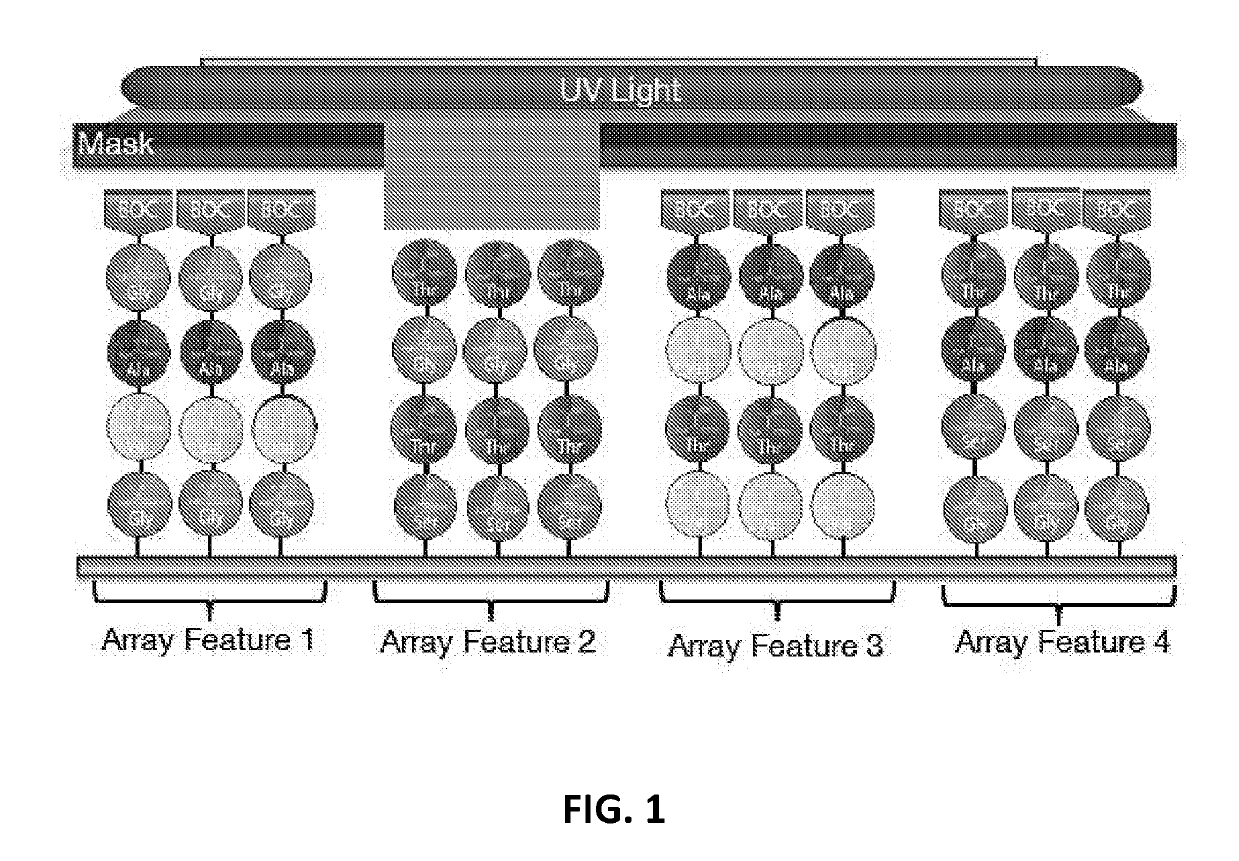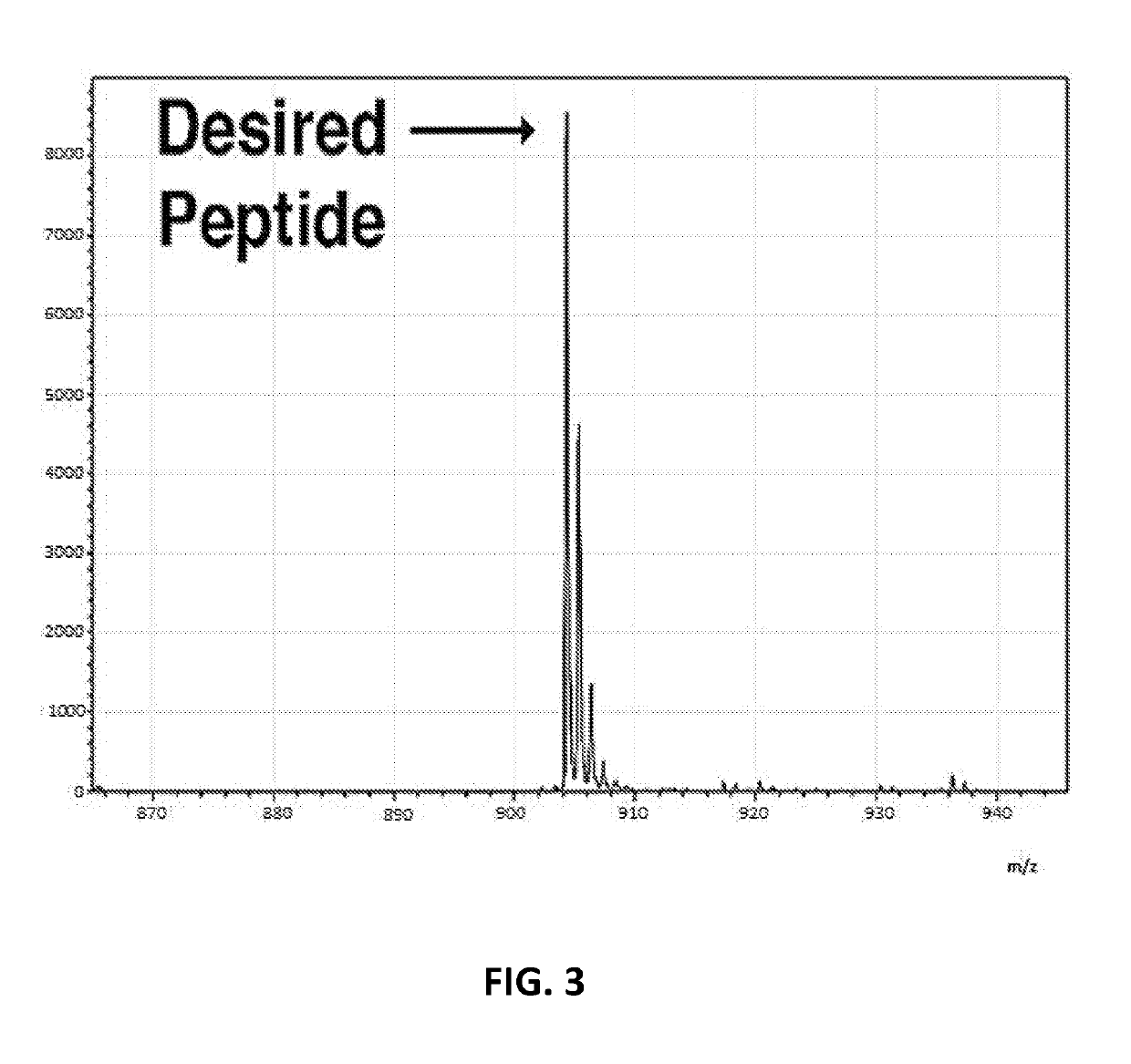Array-based peptide libraries for therapeutic antibody characterization
a technology of peptide libraries and antibodies, applied in the field of array-based peptide libraries for therapeutic antibody characterization, can solve the problems of rapid increase in the cost of cancer treatment, declining cancer patient deaths, and unsustainable trajectory of cancer treatment, and achieves the effects of prolonging patient survival, high discovery and development costs, and high occurrence of major off-target side effects
- Summary
- Abstract
- Description
- Claims
- Application Information
AI Technical Summary
Benefits of technology
Problems solved by technology
Method used
Image
Examples
embodiment 1
[0126]In some embodiments, provide herein are methods of in situ synthesizing a chemical library on a substrate, the chemical library comprising a plurality of molecules, the method comprising:[0127](a) receiving a biological sequence and a number of synthesis steps;[0128](b) determining a plurality of patterned masks, wherein each patterned mask is assigned an activated or inactivated designation to each feature on the substrate, and wherein about 1% to about 75% of the activated designation features in each sequential patterned mask overlaps with the activated designation features of an immediately preceding patterned mask;[0129](c) assigning at least one monomer to each patterned mask; and[0130](d) coupling the monomers onto the features to form molecules;[0131](e) wherein (c) and (d) assembles one said synthesis step and the synthesis step is repeated.
embodiment 2
[0132]The method of Embodiment 1, wherein the number of synthesis steps is larger than 50%, 60%, 70%, 80%, 90%, 100%, 110%, 120%, 130%, 140%, 150%, 160%, 170%, 180%, 190%, or 200% of a length of the biological sequence.
embodiment 3
[0133]The method of Embodiment 1, wherein the input biological sequence comprises a disease-related epitope.
PUM
| Property | Measurement | Unit |
|---|---|---|
| diameter | aaaaa | aaaaa |
| diameter | aaaaa | aaaaa |
| length | aaaaa | aaaaa |
Abstract
Description
Claims
Application Information
 Login to View More
Login to View More - R&D
- Intellectual Property
- Life Sciences
- Materials
- Tech Scout
- Unparalleled Data Quality
- Higher Quality Content
- 60% Fewer Hallucinations
Browse by: Latest US Patents, China's latest patents, Technical Efficacy Thesaurus, Application Domain, Technology Topic, Popular Technical Reports.
© 2025 PatSnap. All rights reserved.Legal|Privacy policy|Modern Slavery Act Transparency Statement|Sitemap|About US| Contact US: help@patsnap.com



